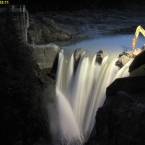Dam Removal
Featured Project
Restoring the Klamath: What we're learning from the largest dam removal project in history
After decades of controversy and campaigning by Indigenous and environmental groups, the largest dam removal project to date world-wide is moving forward in far-northern California and southern Oregon of the United States. Four large hydropower dams on the Klamath River are to be removed, restoring hundreds of miles of habitat for salmon and other species which have been severely affected by the dams. The story of how this broad agreement to remove all four dams was reached, is fascinating and inspiring and could well have relevance for dam campaigners internationally. Read the article to learn more.
Dam Removal Facts
A dam is not forever. Today, more communities than ever are considering the option of removing or modifying dams that have damaged local riverine ecosystems, outlived their usefulness, or become a safety hazard.
There are a range of ways to restore a dammed river, from fully removing the structure to modifying its operation.
Dismantling: The complete dismantling of all physical barriers to stream flow is the only way to fully restore the natural flow of the river, including peak flows and seasonal flooding. This is the best way to restore fish passage and the transport of gravel and organic debris downstream. Dam removal is usually staged to avoid sudden release of the sediments that have accumulated behind the dam wall. This is the most costly (and rarest) restoration option.
Partial Decommissioning: Some of the dam remains with this approach. Altering the dam structure will restore some flow and change the dam's original function.
Modification: Various options have little or no impact on dam function. For example, the addition of fishladders can be used to improve fish access to spawning habitat above the dam without altering the function of the dam itself. This approach
Re-operation: Improving the release of water from dams usually allows the dam to continue with its original functions. Re-operation can improve fish survival downstream by releasing more water from the reservoir during critical times such as spawning season. While more effective management of dams can help to mitigate environmental impacts, it should be noted that many dams around the world presently lack the mechanisms needed to control water discharge.
Decomissioning of dams has primarily taken place in the US and Europe, although the people of the Mun River in Thailand have also made significant strides in having dam gates opened to restore fisheries. The trend is likely to go worldwide, however, as climate change makes the safety of dams and the high cost of retrofitting them a serious argument for decommissioning.
For more information on the rise of dam removal, please explore the River Revival Bulletin archives, in which we regularly summarized US and global dam decommissioning and river restoration news from 1999 to 2009.







